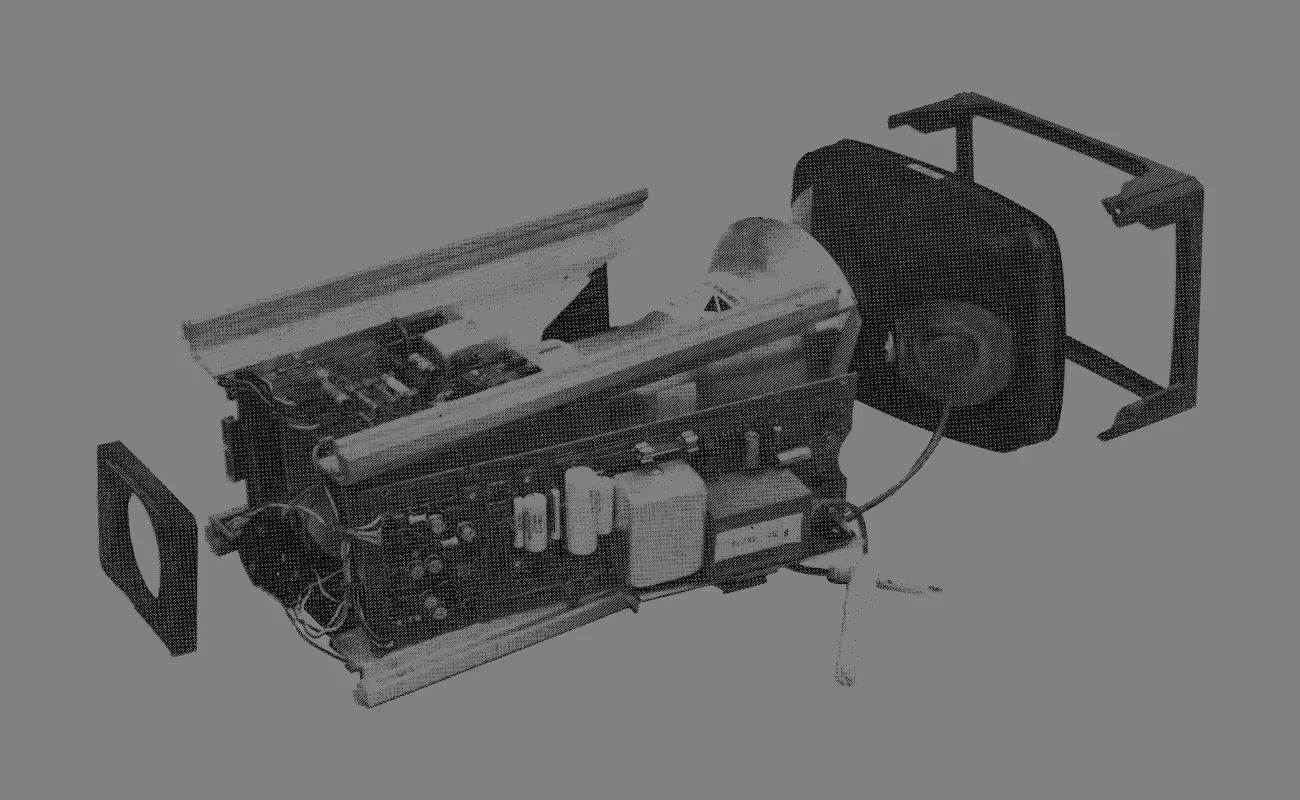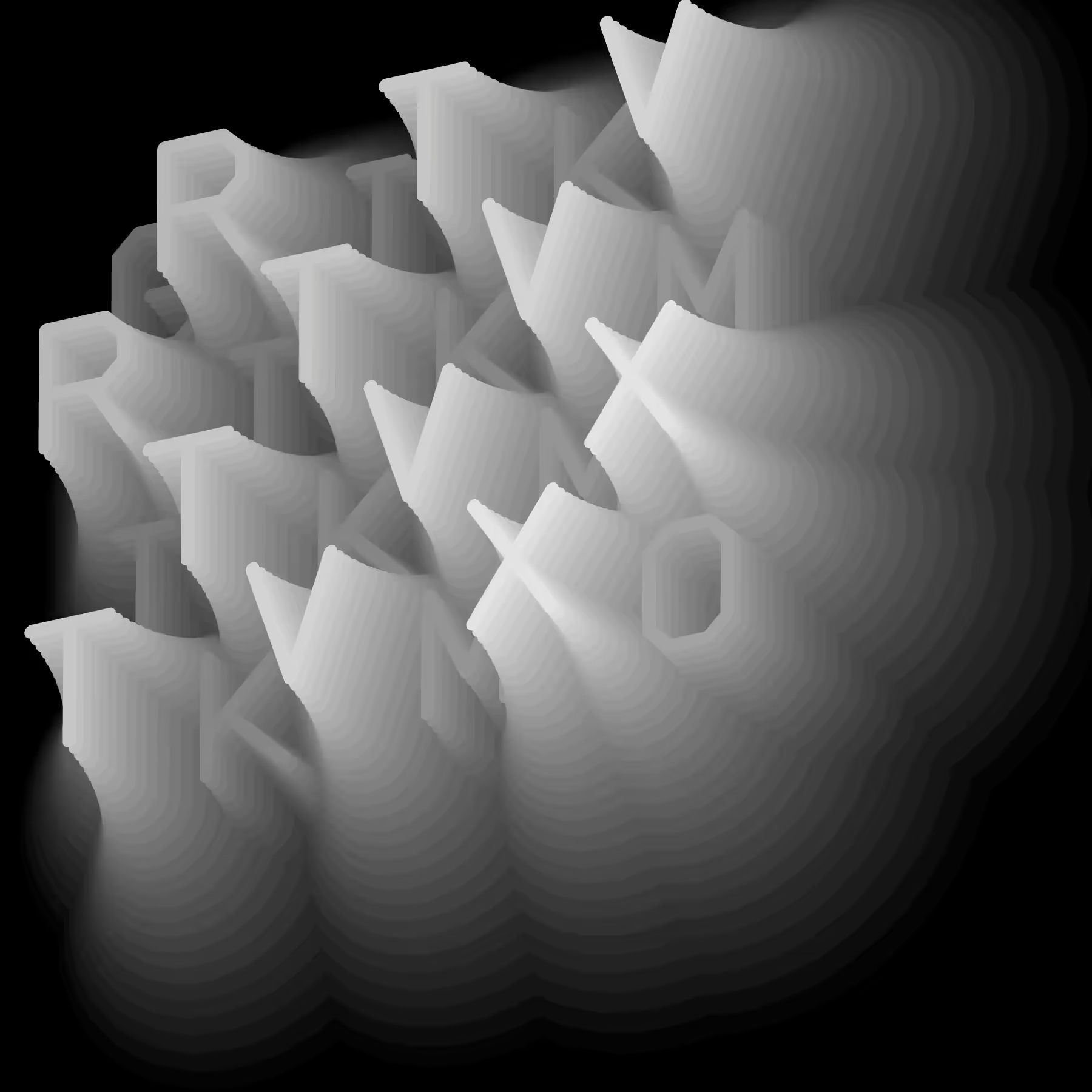
X–Y–Z embeds the glyphs obtained from the ROM of a vector display and animates them through a custom 3D stroke-geometry renderer. An infinite, ever-evolving sequence of planes, defined by simple geometric shapes, flows towards the viewport. Letters and numbers appear within and around these planes, forming new structures and geometries that continuously change over time. Meaning is conveyed not through words or text, but through movement and form.

X–Y–Z embeds the glyphs obtained from the ROM of a vector display and animates them through a custom 3D stroke-geometry renderer. An infinite, ever-evolving sequence of planes, defined by simple geometric shapes, flows towards the viewport. Letters and numbers appear within and around these planes, forming new structures and geometries that continuously change over time. Meaning is conveyed not through words or text, but through movement and form.

X–Y–Z is a study of the built-in typeface found in vintage scientific vector displays from HP. This “font” resides in the ROM (internal memory) of models like the HP1345 and HP1349 XY displays. It is a “single line” design with a very low vertex and segment count (no curves), optimized for efficient rendering on these displays. Due to technical limitations and minimal memory, the typeface has some quirks. All glyphs are designed to fit within an 18×24 grid. The HP1349 display dates back to 1984. These displays cannot connect to a standard video signal/port. Instead, they feature a 26-pin digital interface for sending data to the “vector processor.” Through this interface, geometric coordinates can be sent and displayed as monochrome segments in real time. The protocol also allows for straightforward text rendering using the internal font.

X–Y–Z is a study of the built-in typeface found in vintage scientific vector displays from HP. This “font” resides in the ROM (internal memory) of models like the HP1345 and HP1349 XY displays. It is a “single line” design with a very low vertex and segment count (no curves), optimized for efficient rendering on these displays. Due to technical limitations and minimal memory, the typeface has some quirks. All glyphs are designed to fit within an 18×24 grid. The HP1349 display dates back to 1984. These displays cannot connect to a standard video signal/port. Instead, they feature a 26-pin digital interface for sending data to the “vector processor.” Through this interface, geometric coordinates can be sent and displayed as monochrome segments in real time. The protocol also allows for straightforward text rendering using the internal font.

